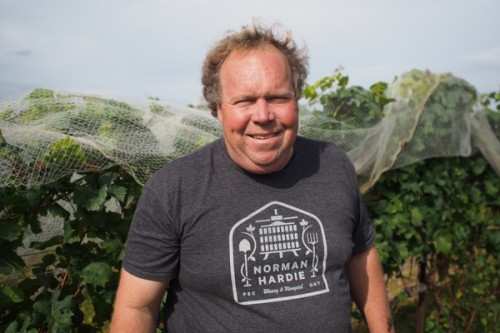
Norman Hardie is one of Canada’s most celebrated winegrowers. Since his first vintage in 2004, his Chardonnay and Pinot Noir – elegant, light in alcohol and very old world in style – have caught the attention of the press both in Canada and also further afield. Norm is based in Prince Edward County in Ontario, but also makes wine from Niagara. [Here’s my report on a visit in 2013.]
A couple of months ago, Norm got in touch with me. ‘Would you like to come out and spend some time with us at harvest?’ Fortunately, I had a gap in the diary, so here I am. For four days, I’ll be immersing myself in vintage here.
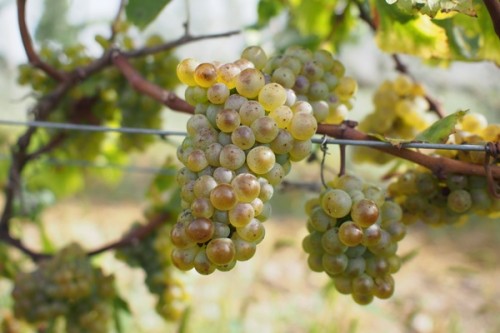
Visiting a winery during vintage is exciting. The downside can be that it’s busy and you don’t really want to be a burden to everyone who’s working flat out at the busiest time of year. But the positive is that you catch the energy and see the key moments in the journey of a new wine. You also get to sense the tension that harvest time creates: everything is happening fast, and a bit of adverse weather or a piece of equipment breaking down can really throw things. So much is at stake.
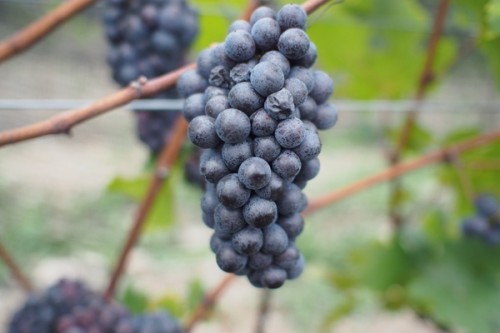
I arrived last night. The winery was busy: Pinot Noir had come in from Niagara, and was being processed. The one-ton bins of grapes were being unloaded onto a vibrating sorting table. This gets rid of little bugs and small pieces of unwanted material, and allows the people operating the sorting table to look at the bunches and eliminate any that don’t look ripe, or are rotten. Then the grapes enter the crusher destemmer, which spits out the stems on one side and the crushed grapes and juice into a plastic fermentation bin. As these are filled up they are taken away and replaced with empty ones. At one point there was a disaster, when the destemmer failed because a key part hadn’t been greased properly. But Mark, who is from a farming background and can repair anything, fixed it, and the work continued.
This process went on past midnight, and then it was time to sit down for a quick dinner, share a glass of wine, and off to bed.
This morning Norm was up at 5 am. He was taking the fermentation bins and drawing off as much juice as possible into a dairy tank, where it was chilled down and then returned to the bin. The idea is to stop fermentation from starting, and have what’s known as a cold soak, where the extraction of colour and flavour from the skins takes place in an aqueous (less extractive) environment. Everyone else began work at the more civilized time of 7 am.
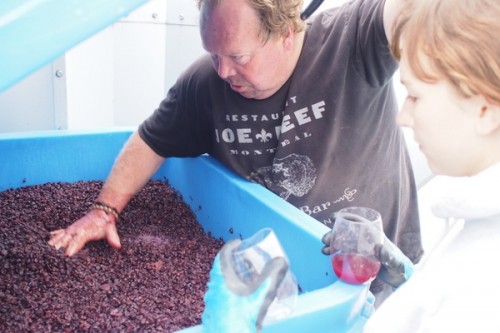
I was up at 7 too, and my first assigned task was to follow Norm going through the fermenting bins of Pinot Noir. Norm explained how some would need punching down (where a special rod is used to submerge the floating cap of skins), while others would just need the cap submerging gently by hand. So along with one of the team, I spent an hour or so lifting the lids of the fermenters, working the cap of skins, cleaning around the rim, then replacing the lids.
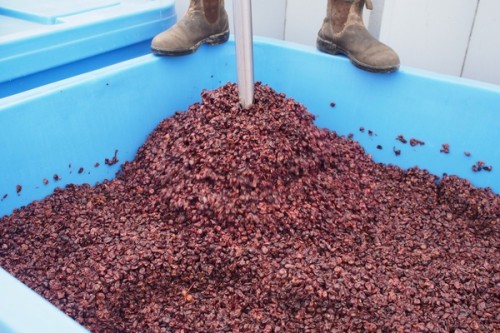
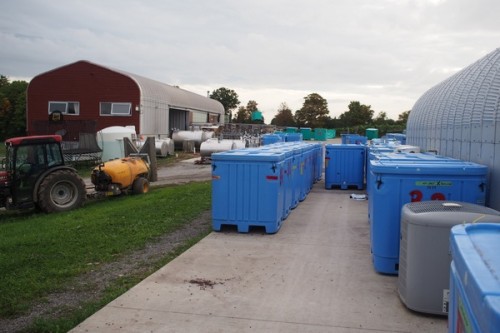
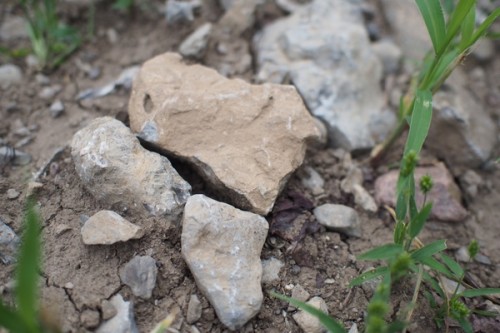

Then it was off with Norm to look at some vineyards. One of the reasons that Prince Edward County is so exciting as a wine region is the soils. These are classic clay/limestone. The hitch? It can be brutally cold in the winter, and the only way to ensure the vines survive is to have a very low head, and then tie down canes at the end of the season and cover them all in earth. This earthing-up means that the vines even survive when temperatures dip below -30 C. Aside from the winter cold, the climate is still quite marginal, though: in 2015 there was very little wine from the County because of a brutal late May frost. Norm only made 9 tons from 50 acres of vineyard. This year, fortunately, things have been much better and it’s a bumper crop.
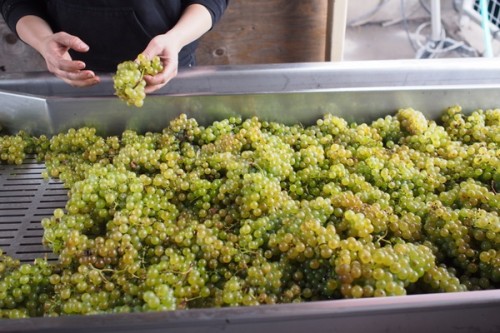
After this, it was time to process some Chardonnay that had come in from Niagara. I was at the sorting table as seven bins were tipped on here, and into the press. There was a near disaster: after five bins had gone into the press it was rotated a few times to make room for the rest, but the doors hadn’t been secured properly. They burst open and jammed. Mark came to the rescue with a hammer and a block of wood, but for a while it looked like the press might be out of action for a day, which would have been terrible. The result of sorting grapes is that you end up very sticky, and covered in wasps who suddenly find you irresistible.
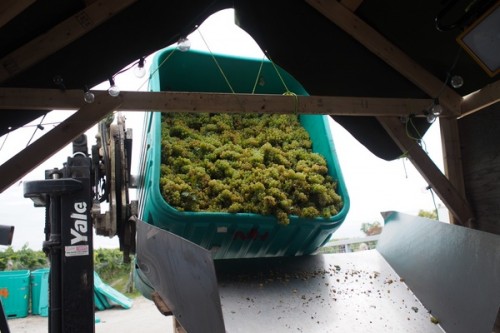
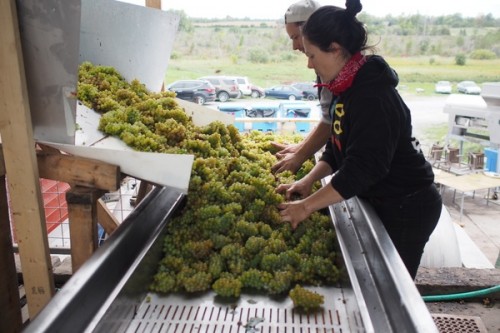
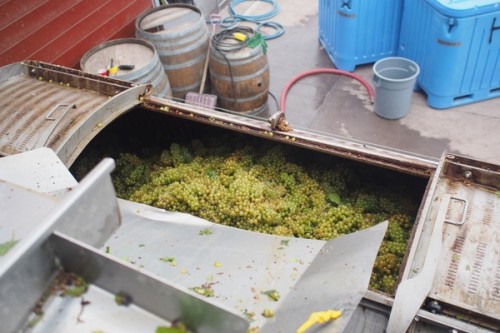
Then I joined Norm to look at the progress of the Chardonnays. Norm likes to get fermentation going in tank before he takes the wine to barrel, especially considering that almost all his ferments are with indigenous yeast (although he has no objections to using cultured yeast or fermentation aids such as Fermaid if they are needed). If you go straight to barrel, some might go stinky, and it’s always the barrels tucked away in the corner at the bottom that decide to do this, which is a real pain for the crew. So the Chardonnay goes into large stainless steel milk tanks to start out with.
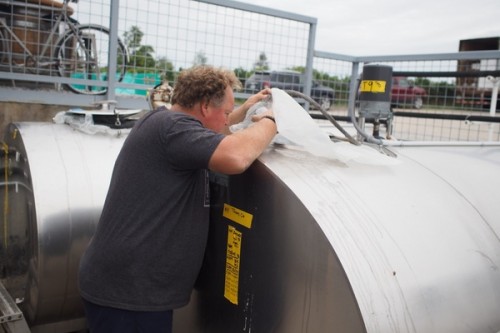
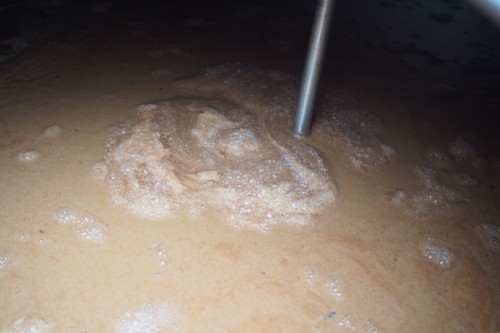
Norm began using these milk tanks for two reasons. First of all, they are horizontal (which means more lees contact, although this means they take up more space). Second, this is dairy farming country, so they are plentiful and affordable. After fermentation is underway, then the wine can go to barrels, the vast majority of which are 500 litres. Two were starting very slowly, so we inoculated them with a pied de cuve, which is a starter fermentation that is begun in a carboy.
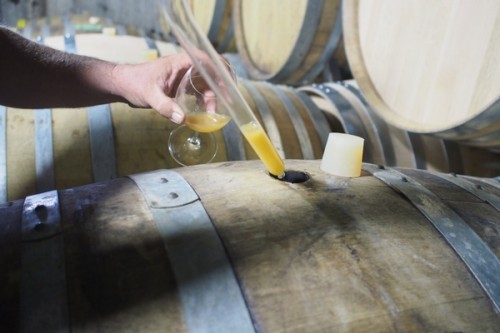
There’s already quite a bit of wine in barrel, and these need checking on too. Norm’s very happy with this vintage so far, but he’s complaining that the wines are just a bit too clean. His favoured style is to toy a bit with reduction, which frames the wine beautifully when it’s done well, adding complexity and setting it up for a long life.
2 Comments on Harvest at Norm Hardie’s (1)
Good honest report, Jamie. Reminds me of some of the places I’ve worked, no matter how much planning and preparation you do, there always seems to be the odd hiccup / near disaster that someone on the team can fix at the 11th hour…
Small world Jamie – I was put visiting Norm at the beginning of September.